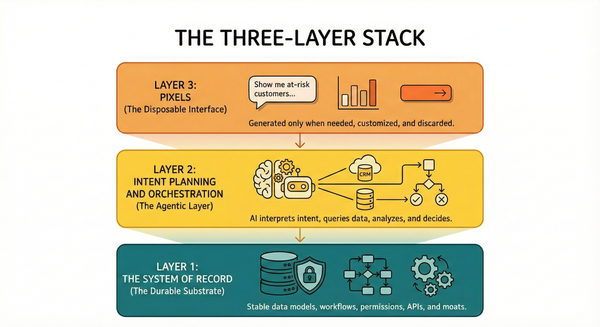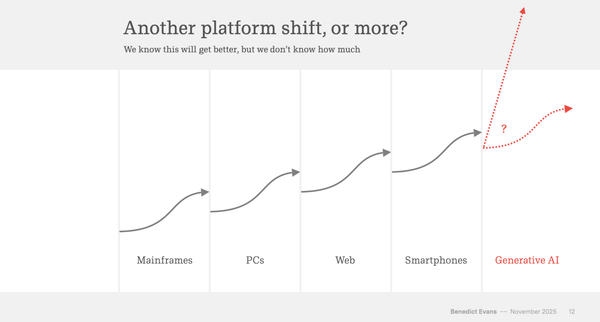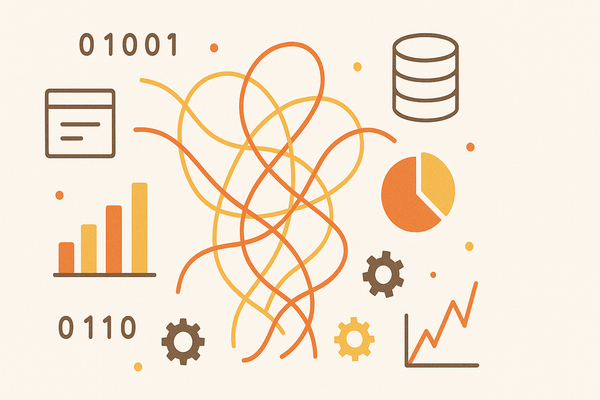AI's Memory Problem: Why Bigger Models Aren't the Answer
As AI models grow larger and more powerful, we're missing something crucial: they can't remember like we do. While we focus on processing power and bigger datasets, the real challenge isn't size - it's memory. Here's why that matters more than you think.

The race toward Artificial General Intelligence (AGI) has captured headlines and imaginations, with each breakthrough bringing declarations of approaching human-level AI. However, these claims overlook a fundamental component essential for true intelligence: memory. While current AI systems can process vast amounts of information, they lack the sophisticated, integrated memory systems that make human intelligence effective and adaptable.
The Hidden Complexity of Human Memory
Consider a simple task: planning a client presentation. While it might seem straightforward, it requires multiple memory systems working together. You need to remember the upcoming stakeholder availability (prospective memory), review past pitch decks (external memory), recall what worked well in previous presentations to this client (episodic memory), and understand how different industries respond to various presentation styles (semantic memory).
What makes human memory powerful is how these different systems interact seamlessly. Your episodic memory might spontaneously remind you about how this client reacted to specific data visualizations in the past, while your semantic memory provides context about their industry preferences and communication style. This intricate dance of memory systems happens so naturally that we rarely notice its complexity – until we try to replicate it artificially.
Current AI Memory Limitations
Today's AI systems attempt to handle memory through four main mechanisms, each with significant limitations:
1. Model Weights
These are like an encyclopedic knowledge base that can never be updated. Once training ends, the weights remain static, unable to incorporate new information or learn from experience.
2. Token Buffers
Serving as AI's working memory, these buffers can only hold limited information and lack the ability to edit or remove data. Unlike human memory, which actively manages and prioritizes information, token buffers simply add new information regardless of importance.
3. Vector Databases
While promising, vector databases fall short in crucial ways:
- Can't create meaningful connections between information
- Must retrieve entire chunks of data at once
- Lack the ability to update or reorganize stored information
4. Plugins
External tools and databases remain separate from the core AI architecture, requiring specific programming for each use case. This prevents the deep integration with thinking processes that characterizes human memory.
The Scale Challenge
The gap between AI and human intelligence becomes stark when comparing numbers:
- Human brain: ~100 trillion synapses with complex, flexible connections
- GPT-4: ~1.8 trillion synapses with rigid, regular patterns
This difference in scale and structure significantly impacts memory formation and retrieval capabilities. Current AI can't form new memories on the fly like humans do - it's stuck with what it learned during training, unable to truly learn from new experiences.
Requirements for True AI Memory
Achieving human-level artificial intelligence requires several breakthroughs:
- Deep Integration: Memory systems must be fundamental to the AI's architecture, not just add-on features.
- Scalable Management: Systems must handle vast information while quickly identifying relevant details.
- Dynamic Updates: AI needs to update, modify, and delete information fluidly, learning from experience like humans do.
- Multiple Memory Types: Different forms of memory must work together seamlessly, combining internal and external resources effectively.
Example Practical Applications
Consider an AI system trying to manage a complex product development cycle. It would need to:
- Track evolving customer feedback and feature requests
- Maintain consistency between different development sprints
- Remember the context behind previous design decisions
- Update its understanding as market conditions change
- Integrate lessons learned from past releases
Current AI systems struggle with these tasks due to their limited memory capabilities. They might excel at analyzing individual data points or generating specific solutions, but fail to maintain the deep contextual understanding needed for long-term product evolution.
Conclusion
The path to true artificial general intelligence isn't just about processing power – it's about developing systems that can think and remember like humans. Until we solve the memory challenge, AI systems will continue to fall short of human-level intelligence, regardless of their other capabilities.
Understanding these limitations helps us appreciate both the complexity of human intelligence and the challenges ahead in AI development. As we continue pushing boundaries, memory integration may be the key that unlocks the next major breakthrough in artificial intelligence.





